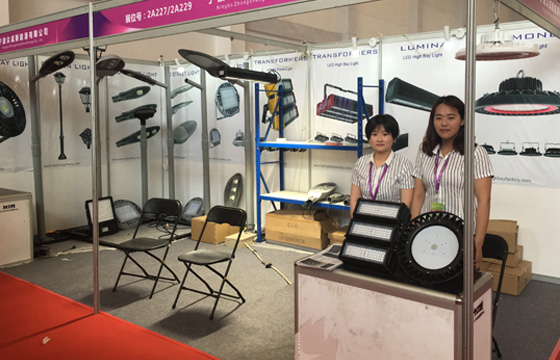Inhaltsübersicht
Umschalten aufEinführung
Ist warmweißes Licht oder kaltweißes Licht für Ihre Bedürfnisse besser geeignet? Die Wahl zwischen warmweißem und kaltweißem LED-Licht kann einen großen Einfluss auf die Funktionalität, die Ästhetik und die Stimmung in Ihrem Raum haben. In diesem Artikel erfahren Sie, wie Sie warm- und kaltweißes Licht in Wohn-, Arbeits- oder Industriebereichen auswählen können. Entdecken Sie, wie die energieeffizienten LedRhythm Lichtlösungen in verschiedenen Farbtemperaturen können Ihren Raum verwandeln.
Kaltweißes Licht: Was ist das?
Eine Farbtemperatur von kaltweißem Licht, normalerweise im Bereich von 5000K bis 6500K, sorgt für ein klares, helles Aussehen. Da sie dem natürlichen Tageslicht nachempfunden ist, eignet sie sich perfekt für Bereiche, die gut sichtbar und produktiv sein müssen.
Kaltweißes Licht eignet sich nicht für Schlafzimmer oder Ruheräume, da es die Melatoninausschüttung beeinflussen und den Schlaf stören kann.
| Aspekt | Beschreibung |
|---|---|
| Farbtemperatur | Normalerweise zwischen 5000K und 6500K |
| Lichtfarbe | Kühles Weiß mit bläulicher Tönung |
| Visueller Effekt | Hell, knackig und belebend |
| Kontrast | Hoher Kontrast, verbessert die Sichtbarkeit von Details |
| Farbrendering | Abhängig vom Produkt; hochwertige Versionen bieten CRI 90+ |
Warmweiße Beleuchtung: Was ist das?
Warmweißes Licht erzeugt ein sanftes, gelbliches Licht mit einer Farbtemperatur von 2700K bis 3000K. Es erzeugt ein warmes, einladendes Ambiente, das sich perfekt für Wohn- und Freizeitbereiche eignet.
| Aspekt | Beschreibung |
|---|---|
| Farbtemperatur | Normalerweise zwischen 2700K und 3000K |
| Lichtfarbe | Weiches Weiß mit gelber oder bernsteinfarbener Tönung |
| Visueller Effekt | Warm, gemütlich und entspannend |
| Ambiente | Schafft eine einladende und komfortable Atmosphäre |
| Farbrendering | Normalerweise hoch, mit einem CRI von 80 bis 90+ |

Hauptunterschied zwischen Kaltweiß und Warmweiß
Die Hauptunterschiede zwischen kaltweißem und warmweißem Licht spiegeln sich in der Farbtemperatur, der visuellen Wahrnehmung, den Anwendungsszenarien und der psychologischen Wirkung wider. Weitere Farbtemperaturunterschiede anzeigen.
Farbtemperatur
- Warmes Weiß: Hat eine niedrigere Farbtemperatur, normalerweise zwischen 2700K und 3500K. Es ähnelt dem Sonnenlicht in der Morgen- oder Abenddämmerung, Kerzenlicht und dem Licht einer Glühbirne. Das Licht hat mehr rote, gelbe und orangefarbene Anteile, was zu einem gelblichen oder rötlichen Aussehen führt.
- Kaltes Weiß: Hat eine höhere Farbtemperatur, normalerweise zwischen 5000K und 6500K. Es ähnelt dem Sonnenlicht zur Mittagszeit, mit mehr Blauanteilen, was zu einem bläulichen oder weißlichen Aussehen führt.
Visuelles Erlebnis und Atmosphäre
- Warmes Weiß: Warm, gemütlich, entspannend und einladend. Es schafft eine weiche, ruhige, romantische und gemütliche Atmosphäre, die Bilder von Kaminen, Abendessen bei Kerzenschein und Lounges hervorruft.
- Kühles Weiß: Hell, klar, belebend und konzentriert. Es schafft eine Atmosphäre von Effizienz, Professionalität, Sauberkeit und Wachsamkeit und ruft Bilder von Krankenhäusern, Büros, Labors, Fabriken und Lagerhäusern hervor.
Anwendbare Szenarien
- Warmes Weiß: Ideal für Bereiche, die ein Gefühl von Ruhe und Wärme vermitteln, wie Schlafzimmer, Esszimmer, Cafés und alle Umgebungen, in denen ein warmer Farbton wichtig ist.
- Kaltes Weiß: Ideal für Bereiche, die eine klare Sicht und konzentrierte Aufmerksamkeit erfordern, wie z. B. Küchen, Bäder, Büros, Fabriken, Krankenhäuser und mehr.
Andere
- Warmweißes Licht: Diese Farbtemperatur ähnelt dem natürlichen Sonnenlicht nach Sonnenuntergang und unterstützt die Melatoninausschüttung des Körpers, was die Entspannung fördert und auf den Schlaf vorbereitet.
- Kaltweißes Licht: Diese Farbtemperatur entspricht eher dem mittäglichen Sonnenlicht, unterdrückt die Melatoninproduktion und fördert Wachsamkeit und Konzentration. Während es für den Schlaf am Tag ideal ist, kann eine übermäßige Exposition gegenüber kaltweißem Licht in der Nacht den Schlaf stören.

Vorteile der kaltweißen Beleuchtung
- Gesteigerte Produktivität: In Büros und in der Industrie fördert der helle Ton der kaltweißen Glühbirnen die Konzentration und verringert die Müdigkeit.
- Echte Farbdarstellung: Perfekt für Umgebungen, in denen es auf Genauigkeit ankommt, z. B. in Designstudios oder Krankenhäusern.
- Vielseitige Anwendungen: Geeignet für kaltweiße LED-Lampen, kaltweiße Lichtkugeln und kaltweiße Strahler.
Vorteile der warmweißen Beleuchtung
- Gemütliches Ambiente: Entspannende Umgebungen sind ideal für den gemütlichen Schein warmer Glühbirnen.
- Energie-Effizienz: Moderne warmweiße LED-Lampen sind energieeffizient, ohne den Komfort zu beeinträchtigen.
- Gesundheitliche Vorteile: Fördert besseren Schlaf und Entspannung durch Reduzierung der Exposition gegenüber blauem Licht.
Auswahl von warmem oder kaltem Weiß für verschiedene Räume
Heimbeleuchtung
Verwenden Sie warmweißes Licht in Schlaf- und Wohnräumen, um eine gemütliche Atmosphäre zu schaffen.
Für bessere Sichtbarkeit sollten Sie in Toiletten und Küchen kaltweiße Glühbirnen verwenden.
Bürobeleuchtung
Installieren Sie kühlweiße LED-Lampen, um die Konzentration und Produktivität zu erhalten.
Vermeiden Sie warme Glühbirnen, die eher schläfrig als wach machen können.
Industrielle und kommerzielle Nutzungen
Kaltweiße LED-Lampen sind für Geschäfte, Lagerhäuser und medizinische Einrichtungen unerlässlich.
Warmweißes Licht verbessert das Kundenerlebnis in Hotels und Einzelhandelsgeschäften.
Kalt- und warmweiße Beleuchtungsprodukte von LedRhythm
LedRhythm bietet hochmoderne LED-Beleuchtungsprodukte an. Jede LED-Leuchte ist in Warmweiß oder Kaltweiß mit bis zu 6500K erhältlich.
Ob Sie nun Experte oder Neuling in der Beleuchtungsbranche sind, Sie können sich gerne an kontaktieren Sie uns. Wir können innerhalb von 24 Stunden eine komplette Beleuchtungslösung für Sie anfertigen.
Zusammenfassend
Bei der Wahl zwischen warm- und kaltweißem Licht sollten Sie nicht nur nach Ihren persönlichen Vorlieben entscheiden. Sie sollten Ihre Umgebung und Ihre Bedürfnisse berücksichtigen, um das beste Lichterlebnis zu gewährleisten.
Denken Sie daran, dass warmweiße LEDs eine angenehme und ruhige Atmosphäre schaffen, während kaltweiße LEDs die Konzentration und Produktivität fördern.
Die Leute fragen auch
Was ist besser für einen Arbeitsbereich: Kaltweiß oder Warmweiß?
Kaltweiße LED-Leuchten eignen sich besser für Arbeitsbereiche, da ihr helles, klares Licht die Konzentration und Produktivität fördert.
Kann ich kaltweißes und warmweißes Licht im selben Raum mischen?
Ja. Die Mischung von kalt- und warmweißem Licht im selben Raum ist in der modernen Beleuchtungsplanung üblich.
Solange die Beleuchtung angemessen aufgeteilt ist, die Bereiche klar definiert sind und die Farbtemperaturunterschiede nicht abrupt sind, kann sie das Ambiente und die Funktionalität des Raums tatsächlich verbessern.
Sind kaltweiße LED-Lampen energieeffizienter als warmweiße?
Bei gleichem Licht sind kaltweiße LEDs im Allgemeinen etwas energieeffizienter als warmweiße LEDs. Das liegt daran, dass kaltweißes Licht effizienter ist, aber der Unterschied ist so gering, dass die tatsächlichen Einsparungen minimal sind.
Sind weiches weißes Licht und warmes weißes Licht sehr ähnlich?
In der Tat. Weiches weißes Licht und warmweißes Licht sind sehr ähnlich und fast gleichwertig. Allerdings hat warmweißes Licht eine etwas höhere Farbtemperatur und einen etwas gelblicheren Farbton.








